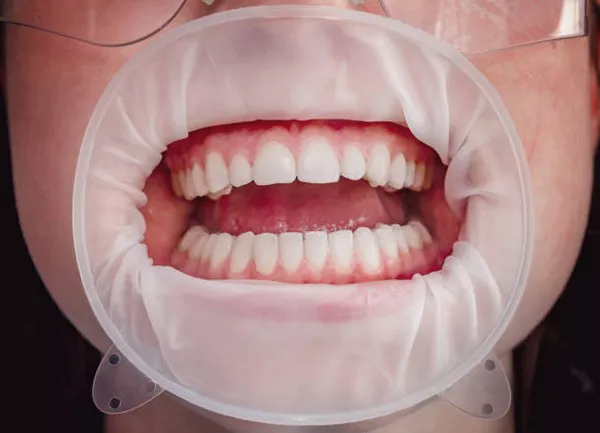Gingivitis, the earliest stage of gum disease, can be effectively treated with professional dental cleanings. These cleanings, known as scaling and root planing, are crucial for removing plaque and tartar buildup, preventing the progression to more severe periodontal diseases. This article provides an in-depth look at the duration, process, pain management, healing time, aftercare, prevention, and frequently asked questions related to gingivitis cleanings.
Procedure Duration
A typical gingivitis cleaning, also referred to as scaling and root planing, generally takes between 30 to 60 minutes per session. The exact duration can vary depending on several factors, including the severity of the gingivitis, the amount of tartar buildup, and the patient’s overall oral health.
Treatment Sessions
The number of treatment sessions required to effectively treat gingivitis can vary. For mild cases, a single session may be sufficient. However, more severe cases with extensive tartar buildup and deeper pockets of infection may require multiple sessions. On average, patients might need anywhere from one to four sessions to thoroughly clean the affected areas.
Process Description
The scaling and root planing process involves several steps to ensure the thorough removal of plaque and tartar both above and below the gum line. Here is a detailed description of the procedure:
Initial Examination: The dentist or dental hygienist begins with a thorough examination of the mouth, using a small mirror to inspect the gums and teeth for signs of gingivitis and tartar buildup.
Scaling: Using specialized instruments, the dental professional removes plaque and tartar from the tooth surfaces. This process targets both the visible areas of the teeth and the hidden areas below the gum line where tartar can accumulate.
Root Planing: After scaling, the dentist smooths the tooth roots. This step helps remove any remaining bacteria and provides a clean surface for the gums to reattach to the teeth. Smoother roots also make it more difficult for bacteria to adhere in the future.
Rinsing and Antimicrobial Treatment: The mouth is rinsed to wash away debris. An antimicrobial solution may be applied to reduce bacteria and promote healing.
Final Inspection: The dentist performs a final inspection to ensure all plaque and tartar have been removed and that the gums are clean and ready for healing.
Pain Management
One common concern about gingivitis cleaning is the potential for pain and discomfort during the procedure. To address this, dental professionals typically use local anesthesia to numb the treatment area, ensuring the patient remains comfortable throughout the procedure. The anesthesia effectively minimizes pain, although some pressure or mild discomfort may still be felt as the scaling instruments are used.
see also: Why Do Clear Braces Turn Yellow
Healing Time
After a gingivitis cleaning, patients can expect to see improvements in their gum health within a few days. The gums may initially feel tender and may be slightly swollen, but this should subside as the healing process progresses. With proper oral care, full healing can be expected within a few weeks. It is important to follow the dentist’s aftercare instructions to ensure optimal recovery and prevent the recurrence of gingivitis.
Aftercare Instructions
Proper aftercare following a gingivitis cleaning is essential for promoting healing and maintaining oral health. Here are some key aftercare tips:
Oral Hygiene Practices: Continue to brush and floss regularly, but do so gently to avoid irritating the gums. Use a soft-bristled toothbrush and consider using toothpaste for sensitive teeth.
Rinse with Salt Water: Rinsing with warm salt water several times a day can help reduce gum inflammation and promote healing. Mix a teaspoon of salt in a cup of warm water and rinse your mouth gently.
Avoid Certain Foods: For a few days after the cleaning, avoid eating hard, crunchy, or spicy foods that can irritate the gums. Stick to soft foods and ensure adequate hydration.
Pain Management: Over-the-counter pain relievers, such as ibuprofen, can help manage any discomfort or swelling. Follow the dosage instructions provided by your dentist or the medication label.
Follow-Up Visits: Attend any scheduled follow-up appointments to allow your dentist to monitor the healing progress and ensure that the gingivitis has been effectively treated.
see also: How To Get Rid Of Yellow Plaque Behind Teeth
Prevention Tips
Preventing gingivitis requires a combination of good oral hygiene practices and regular dental care. Here are some effective prevention tips:
Brush Regularly: Brush your teeth at least twice a day using fluoride toothpaste. Ensure you brush all surfaces of your teeth and along the gum line.
Floss Daily: Flossing removes plaque and food particles from between your teeth and under the gum line where a toothbrush cannot reach.
Regular Dental Check-Ups: Visit your dentist every six months for a professional cleaning and examination. Regular check-ups help detect early signs of gingivitis and other dental issues.
Healthy Diet: Maintain a balanced diet rich in vitamins and minerals to support oral health. Limit sugary snacks and drinks that can contribute to plaque buildup.
Quit Smoking: Smoking is a significant risk factor for gum disease. Quitting smoking can greatly improve your oral health and reduce the risk of gingivitis.
Conclusion
Gingivitis cleaning, or scaling and root planing, is a critical procedure for treating and preventing gum disease. While the duration of each session typically ranges from 30 to 60 minutes, the number of sessions required depends on the severity of the condition. Understanding the cleaning process, managing pain, following aftercare instructions, and adopting preventive measures are essential for maintaining healthy gums and preventing the progression of gingivitis. By staying informed and proactive about oral health, patients can ensure a healthier smile and overall well-being.
FAQs About Gingivitis Cleaning and Deep Cleaning
1. Does a gingivitis cleaning hurt?
Gingivitis cleaning, also known as scaling and root planing, can cause some discomfort, but it is generally not considered painful. The procedure involves removing plaque and tartar from below the gum line, which can irritate inflamed gums. The level of discomfort varies depending on the severity of the gingivitis and the individual’s pain tolerance. Most patients experience only mild discomfort, and any pain is typically temporary.
2. How long does gingivitis scaling take?
The duration of gingivitis scaling depends on the severity of the condition and the amount of plaque and tartar buildup. On average, a session for scaling and root planing can take about 1 to 2 hours. For severe cases of gingivitis, multiple visits may be required to thoroughly clean all affected areas. Your dentist will provide a more accurate timeline based on your specific needs.
3. Do they numb you for gingivitis cleaning?
Yes, local anesthesia is commonly used during gingivitis cleaning to numb the gums and surrounding areas. This helps to minimize discomfort during the procedure. The type and amount of anesthesia will depend on the severity of the gingivitis and the patient’s pain tolerance. If you have concerns about pain, discuss anesthesia options with your dentist to ensure a more comfortable experience.
4. How long should a dental deep cleaning take?
A dental deep cleaning, which includes scaling and root planing, typically takes about 1 to 2 hours per session. The total time required can vary based on the extent of plaque and tartar buildup and the severity of gum disease. For comprehensive cleaning, especially in cases of advanced periodontal disease, multiple visits may be necessary. Your dentist will provide a personalized treatment plan and timeline based on your oral health condition.
You Might Be Interested In
































